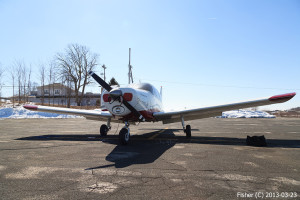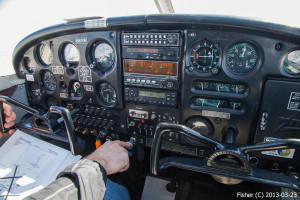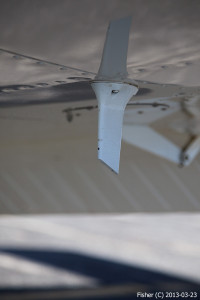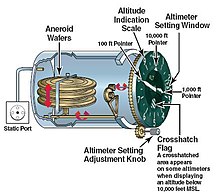没有传感器的时代 | The Era Without Digital Sensor
没有ECU的时代,车子都是有化油器的。
没有压力传感器的时代,飞机的高度、速度是靠静压管和皮托管的。上世纪60年代的玩意儿,到现在还在可靠工作,让我们这些搞挨踢而天天看着各种设备宕机的熊孩子,情何以堪……
如下图像是3月份Fisherworks在Milwaukee出差时候,同事邀请一起去开小灰机时拍摄的
上图:Capitol Drive的小机场,Wisconsin地广人稀真适合这些小机场玩小灰机啊
上图:貌似是1964年设计并首批出产的小灰机,当然这一台就不知道是啥时候出厂的了,貌似197x年一直在生产的说
上图:机型“切诺基140”
上图:同事在驾驶
上图:Michigan湖上空看Milwaukee,好玩的是飞行的上一周周末还在图中湖边的博物馆附近跟俺家领导Echo一起哈皮的拍照玩儿
在xcar的有幸认识的一位教练级飞行员告诉我,如下这个小玩意儿static-pitot probe,俺饶有兴趣的去wikipedia查了查,尽管原理简单,看图就明白,但还是不得不赞叹,上世纪60年代人家都能搞这玩意儿(没准儿更早),而且搞得很精密很可靠,实在是值得竖起双手双脚的大拇哥啊:)
http://www.xcar.com.cn/bbs/viewthread.php?tid=18724984&page=6#pid403253539【图】昨儿同事例行飞行,俺跟着蹭开了一把小灰机
按照您给的名字,翻了一下维基百科
貌似这俩货是跟空速表(马赫表)、高度表和垂直速度表有关的
其中:
1)皮托管压力参考静压管压力,可以得到速度(参考静压管压力可以消除高度影响)
2)静压管可以得到高度(校准为海拔高度)
3)垂直速度表也是根据静压管工作的,只是简单来说它比高度表多了一个校准过的泄气阀,而泄(进)气速度经过机械结构传导则变为垂直速度
4)马赫表是空速参考音速的值,对吧?
这货给我的感觉是,木有电子设备和各种传感器的时候,人们也能根据如此简单的物理原理,做出这般可靠的probe得到自己想要的数据;如同化油器车相对于电喷车一般……让我们这些挨踢出身小盆友不免偶尔惊叹一下……
引用:Pitot-static instrumentsThe pitot-static system obtains pressures for interpretation by the pitot-static instruments. While the explanations below explain traditional, mechanical instruments, many modern aircraft use an air data computer (ADC) to calculate airspeed, rate of climb, altitude and Mach number. In some aircraft, two ADCs receive total and static pressure from independent pitot tubes and static ports, and the aircraft’s flight data computer compares the information from both computers and checks one against the other. There are also “standby instruments”, which are back-up pneumatic instruments employed in the case of problems with the primary instruments.Airspeed indicator Main article: Airspeed indicator
The airspeed indicator is connected to both the pitot and static pressure sources. The difference between the pitot pressure and the static pressure is called dynamic pressure. The greater the dynamic pressure, the higher the airspeed reported. A traditional mechanical airspeed indicator contains a pressure diaphragm that is connected to the pitot tube. The case around the diaphragm is airtight and is vented to the static port. The higher the speed, the higher the ram pressure, the more pressure exerted on the diaphragm, and the larger the needle movement through the mechanical linkage.[4]
Airspeed indicator diagram showing pressure sources from both the pitot tube and static portAltimeter Main article: Altimeter
The pressure altimeter, also known as the barometric altimeter, is used to determine changes in air pressure that occur as the aircraft’s altitude changes.[4] Pressure altimeters must be calibrated prior to flight to register the pressure as an altitude above sea level. The instrument case of the altimeter is airtight and has a vent to the static port. Inside the instrument, there is a sealed aneroid barometer. As pressure in the case decreases, the internal barometer expands, which is mechanically translated into a determination of altitude. The reverse is true when descending from higher to lower altitudes.[4]
Diagram of an altimeterMachmeter Main article: Machmeter
Aircraft designed to operate at transonic or supersonic speeds will incorporate a machmeter. The machmeter is used to show the ratio of true airspeed in relation to the speed of sound. Most supersonic aircraft are limited as to the maximum Mach number they can fly, which is known as the “Mach limit”. The Mach number is displayed on a machmeter as a decimal fraction.[4]Vertical airspeed indicator Main article: Variometer
The variometer, also known as the vertical speed indicator (VSI) or the vertical velocity indicator (VVI), is the pitot-static instrument used to determine whether or not an aircraft is flying in level flight.[5] The vertical airspeed specifically shows the rate of climb or the rate of descent, which is measured in feet per minute or meters per second.[5] The vertical airspeed is measured through a mechanical linkage to a diaphragm located within the instrument. The area surrounding the diaphragm is vented to the static port through a calibrated leak (which also may be known as a “restricted diffuser”).[4] When the aircraft begins to increase altitude, the diaphragm will begin to contract at a rate faster than that of the calibrated leak, causing the needle to show a positive vertical speed. The reverse of this situation is true when an aircraft is descending.[4] The calibrated leak varies from model to model, but the average time for the diaphragm to equalize pressure is between 6 and 9 seconds.[4]
A vertical airspeed indicator
文章的脚注信息由WordPress的wp-posturl插件自动生成













 京公网安备 11011502004657号
京公网安备 11011502004657号
博客知识很专业哈,请问可以交换链接吗?
当然可以:-)